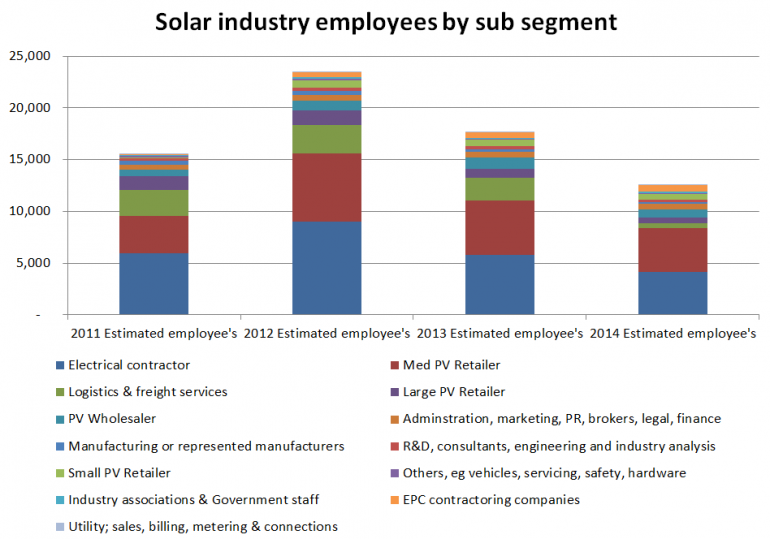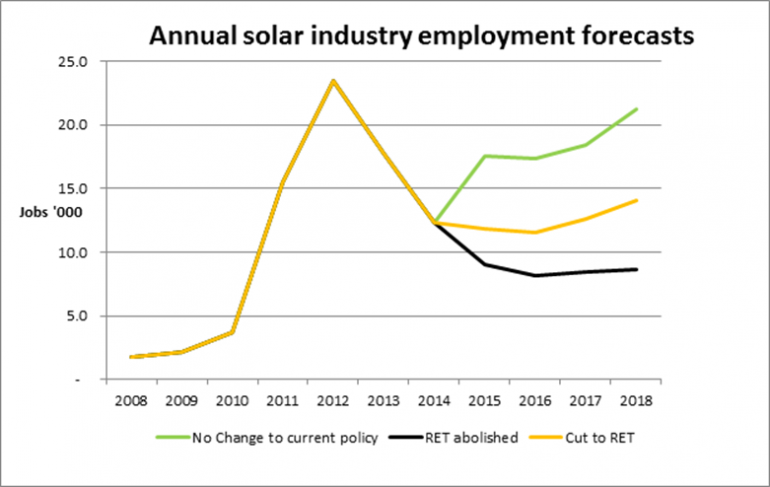Half of solar jobs at risk
An industry body representing traders and brokers in renewable energy certificates has released analysis suggesting that if the Renewable Energy Target were to be abolished by the federal government, the solar sector would see employment fall by more than 5000 people by 2018.
According to the analysis, in 2013 close to 15,000 people were directly employed in production, sale and installation of solar systems with another 2500 providing a range of support services. Interestingly, direct employment in the sector is far larger than many other mature industries considered highly important to the economy. For example, it employs around 17 per cent more people than oil and gas extraction. It is also likely to exceed employment in several other mining sectors – such as gold and copper mining – while supporting around two-thirds of the jobs of the entire coal mining sector.
The chart below provides a break-down on employment within the solar industry by segment.

Source: Solar Business Services
In 2013 employment in the solar photovoltaic industry fell by 5800, or 22 per cent, from 2012 levels, due in large part to the reduction of a range of government support schemes for solar, in particular feed-in tariffs but also a reduction in the level of the rebate supplied via the Small-scale Renewable Energy Target. It is expected employment will fall by another several thousand this year as the effects of policy changes fully flow through to sales.
The Renewable Energy Target will be reviewed by the government this year, and some members of the Coalition government have publicly called for the scheme to be completely disbanded.
Report author Nigel Morris, of Solar Business Services, expects that this would lead to further job losses close to those as outlined in the black line of the chart below (although this scenario also includes negative impacts from other factors, with 75 per cent of job losses attributable to abolishing the RET). Employment in 2015 would then be less than half what it was just three years earlier. Although, interestingly, the sector would still employ more people than aluminium and steel smelting even without the government support policies.

Source: Solar Business Services
If the level of government support for small scale solar systems were to be halved under the RET and other government support – such as via the Clean Energy Finance Corporation – were to disappear then Morris expects employment would remain similar to the depressed levels of 2014 (continuation of yellow line). But lastly, if the policy settings remained constant (other than the carbon price being abolished) then employment closer to the green line is considered most likely.
It should be noted that these employment forecasts are not purely a function of altering policy settings for the RET, because things like exchange rates, PV module prices and electricity prices are also adjusted under each scenario as well. This is because the forecasts are intended to evaluate possible best and worst case scenarios for solar industry participants rather than to guide policymakers. Nonetheless, as mentioned earlier, Morris explains that adjusting settings to the RET make up for around 75 per cent of the difference in employment outcomes.
















